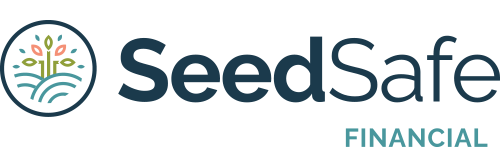What a whirlwind week! Last week we had the chance to go to the XY Planning Network Conference (XYPN Live 2019) for fee-only financial advisors and it was a blassssstttt. Not only was the conference great, but Jim and I were able to take a 2 hour brainstorming walk session around St. Louis. #MyFav

We presented Stock Options 101 to a packed room of financial advisors looking to one-up their stock compensation understanding and how to think about it with clients. [Shout out to my co-presenter and friend, Shane Mason at Brooklyn FI!]
With our powers combined, we tackled:
- how each type of stock compensation works,
- what that means in regards to taxes and AMT, and
- “Pro Tips” on how advisors can best support their clients/push their clients to better use this to grow their wealth
We may even start a stock comp education series to help all of us. <<if you like this idea, please send us feedback and your stock comp questions>>
We also learned how financial advice is changing. Technology won’t replace the advisor, but it will augment and change our focus. We love technology and we are always looking at how to incorporate more into our business (so if you have ideas for us, please let us know!). In the future, the value of advice will be in empathetic learning and financial engagement.
Aka, creating space for you to pause the treadmill of life, consider your true desires, and then automate ways to get closer to that future.
The advisor of the future is coming fast and it will be such a welcome change from what was ‘advice’ by only providing investment services or products.
To this end, I learned what this change may mean for SeedSafe Financial by engaging in a two-day pre-con with George Kinder. George Kinder is the founder of financial life planning. Taking financial plans from how do your assets and resources get you to your goals to are these even the right goals for you? I already use his ‘three big questions’ often. They help me understand whether the financial plan we put together would be meaningful for our clients, but this took it to another level. [more information on The Three Big Questions can be found in this WSJ article – try them on yourself!]
This pre-con was the emotional hard work it takes to make financial life changes for each of us…starting with myself. I cannot ask someone to do what I cannot do for myself, so to be a life financial planner means I have to be living my best life plan too 🙂
Other big takeaways:
- Fee only financial advisors are pretty awesome – I was able to get to know so many planners and learn the story of why they came to the fee-only world. Most started their own businesses, so it was great to learn how others see and do things
- XY Planning Network pushes advisors and consumers to be better – knowledge is power, and XYPN LIVE provides it in spades! Even better, they connect all of us and energize us toward change. The conference did not disappoint in this arena
- Technology changes…but stays the same. We all want connection in the digital age, so use technology to that end. Automate what you can from a quantitative and logical standpoint. Augment your connection through more videos and meaningful communication
This year is a record for my family and firm in the world of changes and new experiences. I’d like to think those changes will finally settle a bit and allow me the space to talk with you more in the future. To that end, we will be restarting our newsletters and incorporating ‘mini learning series’ on a bi-monthly basis. We will cover our “pro tips” on:
- home purchases,
- involving kids in family finances,
- reviewing your employment benefits, and of course,
- stock compensation
If you want to learn more about the power of life habits, cleaning your financial house, and creating your own financial plan, sign up for our newsletter HERE.
